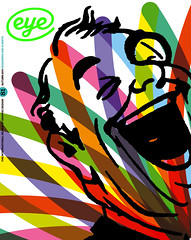Autumn 2011
Playing to their special strengths
Postcards of the Wiener Werkstätte: A Catalogue Raisonné: Selections from the Leonard A. Lauder Collection
Hatje Cantz, £55, €58The Tower of Pisa, the Mona Lisa and Mickey Mouse of the postcard world is that pioneer outfit of brand and logo, the Wiener Werkstätte. Somewhat artier and certainly craftier than the English predecessor it took as a model (and more fashion oriented than William Morris & Co.), the Vienna Workshops was a true collective of creative practitioners. It bridged the gap between Jugendstil and the Bauhaus.
With regard to the postcard, the Werkstätte’s timing was perfect: it was the height of the postcard craze. German-speaking countries were streets ahead in the technologies of colour printing in those years before the First World War when every family had an album for favourite cards.
Erratically numbered from one (in 1908) to 1000 (circa 1913), the classic Wiener Werkstätte cards came out at rapid intervals averaging three or four a week. Although many took the form of greeting cards or representations of Austro-Hungarian beauty spots in the approved style, the largest group served to advertise workshop products, especially items of radical fashion. The leading artist in this field was the skilful and inventive (and amazingly prolific) Mela Köhler, originally a student of the Werkstätte founders, Koloman Moser and Josef Hoffman.
Starry names feature in the lists with what look now like guest appearances (Oskar Kokoschka and Egon Schiele) but the characteristic continuity is more like that of a repertory company with performers playing to their special strengths; Moriz Jung’s caricatures and Gustav Kalhammer with his architectural views and interiors.
Examined critically, the variation in artistic quality is quite wide, yet a general elegance is maintained by high production values, the richness of blacks and church window brilliance of colour.
Every branch of collecting has its completists and none more assiduous than Leonard A. Lauder, who, moving from stall to stall in the wearying postcard fairs of the world, has gathered this virtually gapless sequence of the Werkstätte production (including those stragglers issued as late as 1919). You can see them all in actuality at the Neue Galerie, New York, to which the collection has been presented and where it now lives amongst its progenitors and peers.
If you cannot visit the real thing, reach for this handsomely produced book, which wears its years of passionate research lightly and presents the works with facsimile brilliance. Electronics may one day offer virtual reality but, until then, this superlative survey is to be savoured; ideally with the accompaniment of a large cup of coffee and a small cigar.
First published in Eye no. 81 vol. 21 2011
Eye is the world’s most beautiful and collectable graphic design journal, published quarterly for professional designers, students and anyone interested in critical, informed writing about graphic design and visual culture. It is available from all good design bookshops and online at the Eye shop, where you can buy subscriptions, back issues and single copies of the latest issue.

